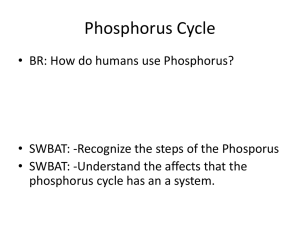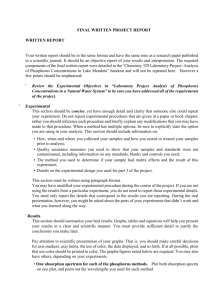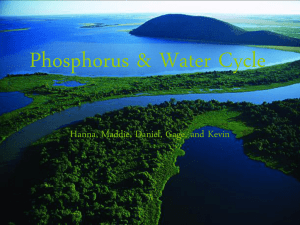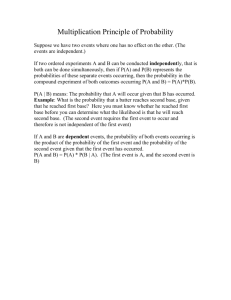1. AP Biology Living Metabolism Part 1 Outline
advertisement
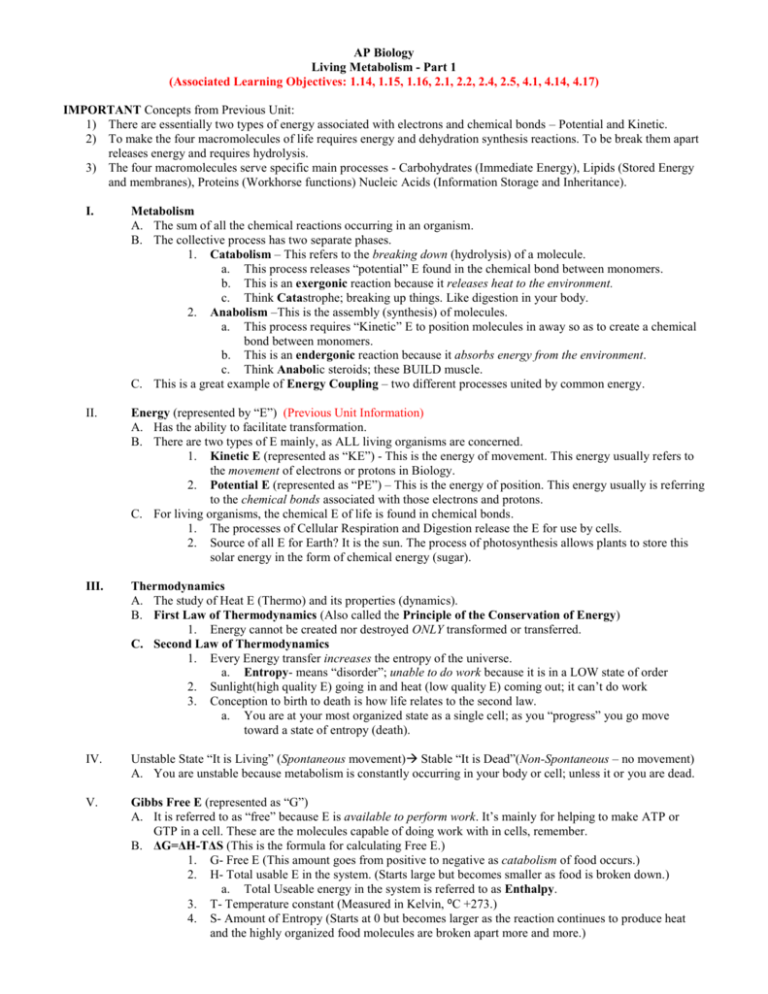
AP Biology Living Metabolism - Part 1 (Associated Learning Objectives: 1.14, 1.15, 1.16, 2.1, 2.2, 2.4, 2.5, 4.1, 4.14, 4.17) IMPORTANT Concepts from Previous Unit: 1) There are essentially two types of energy associated with electrons and chemical bonds – Potential and Kinetic. 2) To make the four macromolecules of life requires energy and dehydration synthesis reactions. To be break them apart releases energy and requires hydrolysis. 3) The four macromolecules serve specific main processes - Carbohydrates (Immediate Energy), Lipids (Stored Energy and membranes), Proteins (Workhorse functions) Nucleic Acids (Information Storage and Inheritance). I. Metabolism A. The sum of all the chemical reactions occurring in an organism. B. The collective process has two separate phases. 1. Catabolism – This refers to the breaking down (hydrolysis) of a molecule. a. This process releases “potential” E found in the chemical bond between monomers. b. This is an exergonic reaction because it releases heat to the environment. c. Think Catastrophe; breaking up things. Like digestion in your body. 2. Anabolism –This is the assembly (synthesis) of molecules. a. This process requires “Kinetic” E to position molecules in away so as to create a chemical bond between monomers. b. This is an endergonic reaction because it absorbs energy from the environment. c. Think Anabolic steroids; these BUILD muscle. C. This is a great example of Energy Coupling – two different processes united by common energy. II. Energy (represented by “E”) (Previous Unit Information) A. Has the ability to facilitate transformation. B. There are two types of E mainly, as ALL living organisms are concerned. 1. Kinetic E (represented as “KE”) - This is the energy of movement. This energy usually refers to the movement of electrons or protons in Biology. 2. Potential E (represented as “PE”) – This is the energy of position. This energy usually is referring to the chemical bonds associated with those electrons and protons. C. For living organisms, the chemical E of life is found in chemical bonds. 1. The processes of Cellular Respiration and Digestion release the E for use by cells. 2. Source of all E for Earth? It is the sun. The process of photosynthesis allows plants to store this solar energy in the form of chemical energy (sugar). III. Thermodynamics A. The study of Heat E (Thermo) and its properties (dynamics). B. First Law of Thermodynamics (Also called the Principle of the Conservation of Energy) 1. Energy cannot be created nor destroyed ONLY transformed or transferred. C. Second Law of Thermodynamics 1. Every Energy transfer increases the entropy of the universe. a. Entropy- means “disorder”; unable to do work because it is in a LOW state of order 2. Sunlight(high quality E) going in and heat (low quality E) coming out; it can’t do work 3. Conception to birth to death is how life relates to the second law. a. You are at your most organized state as a single cell; as you “progress” you go move toward a state of entropy (death). IV. Unstable State “It is Living” (Spontaneous movement) Stable “It is Dead”(Non-Spontaneous – no movement) A. You are unstable because metabolism is constantly occurring in your body or cell; unless it or you are dead. V. Gibbs Free E (represented as “G”) A. It is referred to as “free” because E is available to perform work. It’s mainly for helping to make ATP or GTP in a cell. These are the molecules capable of doing work with in cells, remember. B. ΔG=ΔH-TΔS (This is the formula for calculating Free E.) 1. G- Free E (This amount goes from positive to negative as catabolism of food occurs.) 2. H- Total usable E in the system. (Starts large but becomes smaller as food is broken down.) a. Total Useable energy in the system is referred to as Enthalpy. 3. T- Temperature constant (Measured in Kelvin, ⁰C +273.) 4. S- Amount of Entropy (Starts at 0 but becomes larger as the reaction continues to produce heat and the highly organized food molecules are broken apart more and more.) C. Not all energy is available. (Some is lost as waste…like when we defecate…same goes for cells too.) 1. MOST energy is lost as Heat as a byproduct of the bonds being broken. D. ΔG = G(f) – G(i)… The change in free E is equal to the final amount minus the initial amount. E. If ΔG is negative, then there is E available “free” to perform work. (It is Spontaneous.)(It is Exergonic.) 1. This is the result of Cellular Respiration and Digestion. It is a Catabolic processes that releases free E.) F. If ΔG is positive, then there is E that is not available because it is “locked up” and can NOT perform work. (It is Non-Spontaneous.)(It is Endergonic.) 1. Photosynthesis is a good example It is an Anabolic processes that stores free E. G. Chemical Equilibrium = Death (Organism is stable… therefore there is no metabolism occurring.) H. Disequilibrium = Life (Organism is unstable…therefore there is metabolism occurring.) 1. Energy coupling the entire time is occurring, if the organism is living. VI. Types of work performed by living cells: A. Mechanical – work outside or inside of the cell (Usually movement of something or movement of the cell) 1. Such as moving organelles or chromosomes during mitosis or meiosis. B. Transport across the membrane of molecules. C. Metabolic processes – Catabolism and Anabolism as discussed previously. VII. ATP (Adenosine Tri-Phosphate) A. Made from Ribose sugar and the nitrogen base Adenine. B. Has 3 NEGATIVE phosphates linked together which makes it HIGHLY unstable like a “COMPRESSED SPRING”. Unstable, means it has the capacity do perform work, remember. 1. Remember, phosphates are a functional group that was associated with energy. 2. The three phosphates gives this molecule several times more energy capability than an electron. C. ATP undergoing hydrolysis to ADP has a ΔG = -13J (releases energy); ADP undergoing dehydration synthesis to ATP has a ΔG = 13J (requires energy).The energy needed to make this bond comes from the “free” e in our food as it is broken down. ADP is recycled back to ATP. D. Phosphorylation 1. The attaching of an unstable phosphorus ion to another molecule to make it unstable and thereby able to perform work. Take the phosphorus off and it quits working. D. Phosphorus Cycle (Previous Unit Information) The Phosphorus is initially a component of rock. As the rock breaks down over time, called weathering, the Phosphorus is released into the soil. Some dissolves into the water as the rains pass through the soil. This Phosphorus makes its way into bodies of water, such as lakes and oceans, and is available for producers (phytoplankton) to use to help make organic compounds such as phospholipids and DNA or RNA. Plants (also producers) can also retrieve the Phosphorus from the soil and use it to make organic compounds too. When organisms die, decomposers break down the bodies and return the Phosphorus back to the soil to be reused



